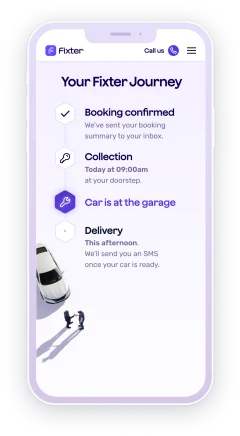Understanding what is checked on an MOT is crucial for any car owner to ensure their vehicle is roadworthy and compliant with UK legal standards. The MOT test is a mandatory annual examination for vehicles over three years old, assessing various components to guarantee safety and functionality. From brakes to tyres and emissions, each element is scrutinised to confirm it meets the required standards. This guide provides a comprehensive look at what is checked on an MOT, helping you prepare your vehicle confidently. Whether you're a seasoned driver or new to car ownership, this knowledge will help you keep your vehicle in top condition and road-ready.
Understanding the MOT Test
The Purpose Behind MOT
The MOT test ensures vehicles meet UK road safety and environmental standards. Introduced in 1960, the MOT prevents unsafe cars from remaining on the roads, protecting drivers, passengers, and pedestrians. The test checks vital safety components like brakes, lights, and tyres, ensuring vehicles meet a baseline level of safety. Additionally, it evaluates emissions to help reduce air pollution. This is crucial as the UK strives to lower its carbon footprint. The MOT provides reassurance to car owners that their vehicles are fit for the road and meet legal requirements. Understanding what is checked on an MOT helps car owners prepare adequately, ensuring their cars are safe and compliant.
Importance for Car Owners
For car owners, understanding the importance of the MOT test is essential. It's a legal requirement for vehicles over three years old in the UK. Driving without a valid MOT certificate can result in fines and penalties, and it may also invalidate your insurance. Beyond legality, the MOT is a chance to ensure your car is functioning properly. Regular checks can catch small problems before they become costly repairs. A vehicle that passes its MOT is more reliable, safer, and more efficient, giving drivers peace of mind. Knowing what is checked on an MOT empowers car owners to maintain their vehicles better and avoid unexpected breakdowns.
When to Schedule Your MOT
Scheduling your MOT test at the right time is crucial for ensuring your car remains legally roadworthy. You must take your vehicle for an MOT annually if it’s older than three years. Booking your MOT in advance, especially before your due date, allows time for any necessary repairs. You can book your test up to one month before your current certificate expires and still keep the same renewal date. This gives you time to address any issues without rushing or risking driving illegally. By planning ahead, you can avoid last-minute stress and ensure your vehicle stays safe and compliant with UK laws.
Exterior Checks and Components
Lights and Indicators
Lights and indicators are essential for road safety, making their proper function a key part of the MOT test. During the inspection, headlights, brake lights, sidelights, reverse lights, and indicators are checked to ensure they work correctly and are securely fitted. Any broken or malfunctioning lights can lead to an MOT failure, as they impair your visibility or ability to signal intentions on the road. It's important to check that all lights are of the correct brightness and colour before the MOT test, helping to reduce the risk of failure and ensuring your vehicle is safe to drive.
Windscreen and Wipers
The windscreen and wipers are vital for clear visibility, especially in poor weather conditions. During the MOT test, the windscreen is inspected for any cracks or chips, particularly in the driver’s line of sight. Even small chips can escalate into larger cracks if left unchecked. The wipers are also tested to ensure they effectively clear the windscreen of rain or debris. Any damage to the windscreen or faulty wipers could lead to an MOT failure. Ensuring the windscreen is free from damage and the wipers function properly will help you pass the MOT and stay safe on the road.
Tyres and Wheels
Tyres and wheels are vital for maintaining control and stability on UK roads, especially given the unpredictable weather. The MOT checks that tyres meet the UK’s legal minimum tread depth of 1.6mm across the central part of the tyre. It also ensures that the tyres are free from cuts, bulges, or damage, which could cause a blowout. Wheels are checked for cracks and secure attachment, as any weakness could compromise vehicle safety. Keeping your tyres and wheels in good condition not only helps you pass the MOT but also improves overall driving safety and performance.

Under the Bonnet Inspections
Engine and Fuel System
The engine and fuel system are vital for vehicle performance and are closely inspected during the MOT. The test checks for any oil or fluid leaks that could indicate deeper mechanical issues. Leaks not only harm vehicle performance but also pose safety and environmental risks. The fuel system, including fuel lines and tanks, is examined for signs of wear or damage. A well-maintained engine and fuel system will improve your vehicle's performance and fuel efficiency. Addressing leaks and damage before the MOT can prevent a failure and reduce the risk of costly repairs.
Exhaust and Emissions
The exhaust system is checked for leaks and damage, while emissions are tested to ensure they fall within legal limits. A properly functioning exhaust system channels harmful gases away from the vehicle, reducing pollution and engine noise. Excessive emissions indicate potential engine issues and can cause your vehicle to fail the MOT. Understanding what is checked on an MOT regarding the exhaust system allows you to make necessary repairs, ensuring your vehicle complies with environmental standards.
Battery and Electrics
The MOT test inspects the battery for secure mounting and checks for any signs of corrosion around the terminals. A poorly secured or corroded battery can lead to electrical failures or breakdowns. The test also examines essential electrical systems, including lights and indicators, to ensure they function properly. Faulty electrical systems not only pose a safety risk but can also result in an MOT failure. Regularly maintaining the battery and electrics ensures your car passes the test and performs reliably on the road.
Interior Examination Procedures
Seats and Seatbelts
The safety of a vehicle’s occupants is a top priority, which is why seats and seatbelts undergo a thorough inspection during the MOT test. The seats are checked to ensure they are securely fastened and do not move under normal driving conditions or during sudden stops. Unstable seats can pose a serious safety risk to passengers. Seatbelts are examined for any signs of wear, such as cuts, fraying, or damage. Each seatbelt must retract properly and latch securely, ensuring adequate restraint during an accident. The test also ensures that the seatbelt warning lights are functioning correctly. Ensuring that your seats and seatbelts are in good working condition helps ensure both passenger safety and a successful MOT result. By understanding what is checked on an MOT regarding seats and seatbelts, car owners can make any necessary repairs before the test.
Dashboard and Controls
The dashboard and its associated controls are inspected during the MOT to ensure all instruments and warning systems function properly. This includes checking that the dashboard lights and gauges—such as the speedometer, fuel gauge, and any warning indicators—are working correctly. These gauges provide critical information to the driver, allowing them to monitor vehicle performance and identify any issues early. The MOT also examines the operation of essential controls like the horn, hazard lights, and windscreen wipers. These controls must be easy to access and fully operational for safe driving. Malfunctioning dashboard components or controls can lead to an MOT failure. Understanding what is checked on an MOT regarding the dashboard and controls helps ensure your vehicle is roadworthy.
Mirrors and Visibility
Mirrors and visibility are key elements for safe driving, which is why they are rigorously inspected during the MOT. The test ensures that all mirrors—rear-view and side mirrors—are securely mounted and free from cracks or damage. These mirrors must provide a clear and unobstructed view of the road, allowing drivers to spot other vehicles and obstacles. The MOT also checks for any obstructions to visibility in the driver's line of sight, such as stickers or significant windscreen damage. Clear visibility is essential for making safe driving decisions, such as lane changes or reversing. By understanding what is checked on an MOT regarding mirrors and visibility, car owners can take steps to address any issues before the test, helping to pass without trouble.
Chassis and Underbody Assessment
Suspension and Steering
The suspension and steering systems are critical for safe vehicle handling, and they are thoroughly inspected during the MOT test. The suspension system, including shock absorbers and springs, is checked for wear and damage. These components are essential for absorbing road bumps and ensuring proper tyre contact with the road, which helps maintain control and ride comfort. The steering system is evaluated for any looseness or difficulty in steering, which can pose significant safety risks. The steering wheel, column, and linkages are also inspected to ensure everything is functioning smoothly. Any issues with suspension or steering can lead to an MOT failure. By understanding what is checked on an MOT regarding these systems, car owners can address problems early and ensure their vehicle remains safe and roadworthy.
Brakes and Handbrake
The braking system, including the handbrake, is one of the most vital safety components of a vehicle and undergoes a rigorous inspection during the MOT. The test checks the brake pads, discs, and lines for signs of wear, damage, or leaks. Any issues with the braking system can lead to an MOT failure, as the brakes are essential for stopping the vehicle safely. The handbrake, also known as the parking brake, is tested to ensure it holds the vehicle securely on an incline and operates smoothly. The overall braking performance is measured to confirm the car can stop safely and in balance across all wheels. Understanding what is checked on an MOT regarding brakes and the handbrake helps ensure your car passes the test and remains safe to drive.
Bodywork and Corrosion
Bodywork and corrosion are important factors in the MOT test because they affect the vehicle's structural integrity and safety. The test examines the car’s bodywork for damage or rust that could compromise the vehicle's strength. Sharp edges or protrusions that could injure pedestrians or other road users are also flagged. Corrosion, especially around critical areas such as the chassis, suspension mounting points, and seat belt anchorages, is closely inspected. Excessive rust can weaken the vehicle’s structure, making it less able to withstand impacts. Surface rust may not cause a failure unless it affects the vehicle’s structural integrity or safety-related areas. Understanding what is checked on an MOT in terms of bodywork and corrosion allows car owners to address these issues in advance, ensuring the vehicle remains roadworthy.









